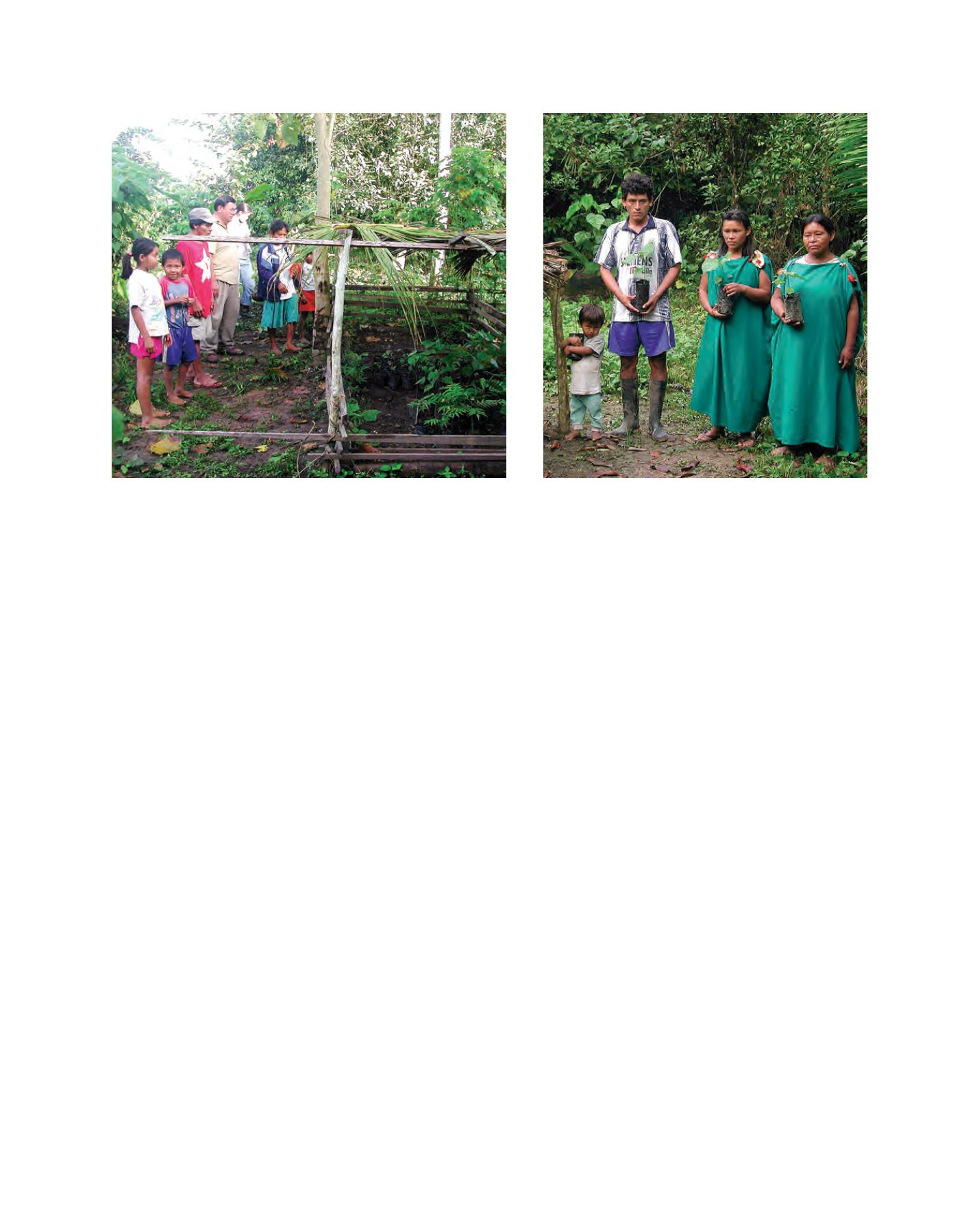

[
] 226
interests in policy development, forest product markets
and the development of appropriate support services. The
underlying reason is inadequate cooperation among forest
communities and their enterprises. Forest users’ organi-
zations, networks and alliances are essential to advance
community forestry and CFEs. There has been extensive
reliance on external intermediaries such as non-govern-
mental organizations and government agencies, with
a focus on short-term project approaches to providing
support. Building up community capacity is, however, a
long-term endeavour. Capacity-building is also needed
in forest agencies to create new attitudes and skills to
enhance their facilitation role.
In spite of its importance, traditional knowledge is not
usually enough when forests are managed for market-
based production purposes. Indigenous peoples and forest
communities typically lack essential managerial and tech-
nical skills, knowledge and experience in running CFEs
and accessing markets. This is a key constraint which
also makes communities vulnerable to external pressures
and illicit activities. Building up community capacity to
plan, utilize, monitor and control their forest resources
is therefore critical to reduce illegal logging and associ-
ated trade. However, in most ITTO-producing member
countries a shortage of targeted capacity-building and
training facilities, weak local intermediaries and inad-
equate support to community-based organizations are
retarding progress. Valuable lessons learned have been
accumulated in many countries but this knowledge has
not been sufficiently used to replicate and upscale success-
ful experiences. Traditional knowledge should not be lost
as it can provide invaluable support to sustainable forest
management if systematized, improved and disseminated
together with modern tools to increase competitiveness
and market-based approaches.
utilization and community investment. This is partly explained by
inappropriate legal and policy frameworks which have often been
designed for large-scale private operators and tend to be biased
against small-scale operators like CFEs.
In various ITTO producing member countries there is a lack of
clear government policies on community forest management, which
is reflected in the absence of targeted public support to this activ-
ity. National policies tend to overlook the economic potential of
community forestry and the important social, cultural and other
benefits of CFEs. Even where policies exist, forest authorities do not
tend to have confidence in the capacity of indigenous peoples and
communities to sustainably manage their forest resources.
Consultations with ITTO producing member country focal
points have revealed that, in countries with no or weak community
forests, government institutions do not fully understand commu-
nity priorities. In most countries, even where legal reforms have
been carried out, the regulatory frameworks reflect outmoded tenure
arrangements and can make it impossible for small-scale actors and
communities to benefit from the reforms. Discriminatory rules
and regulations can represent fundamental challenges for forest
communities and the rural poor.
7
Regulations often prevent legal
access to forests and markets, unduly raise the transaction costs for
community enterprises and promote unfair sharing of benefits and
corruption. In addition, arbitrary changes of rules and obligations
can have dire consequences for local people.
8
Regarding social assets, weak internal organization is often found
in forest communities, particularly those which have a heterogene-
ous ethnic population structure. This is often associated with differing
priorities and conflicting interests among community members, some-
times resulting in inequitable sharing of benefits. Basic organizational
capacity and effective participation of all members of the community,
including women and marginalized groups, are preconditions for
success in such targeted joint efforts as sustainable forest management.
Being small and isolated, forest communities do not represent the
necessary critical mass as a stakeholder group to promote common
Community forest nurseries have an important role to play in education
Ashaninka family in community forestry plantation, Peru
Image: Ruben Guevara, ITTO
Image: Ruben Guevara, ITTO
















